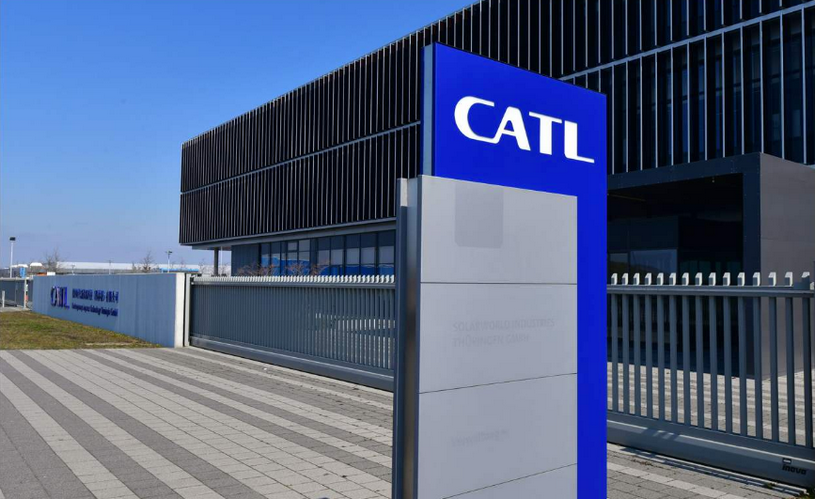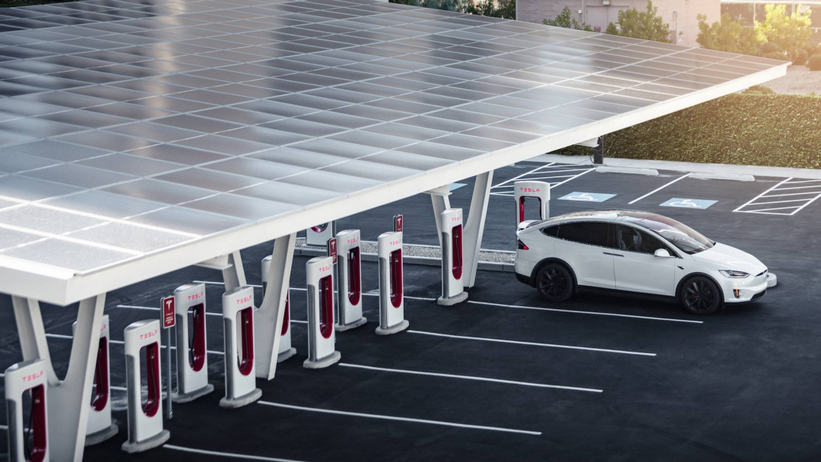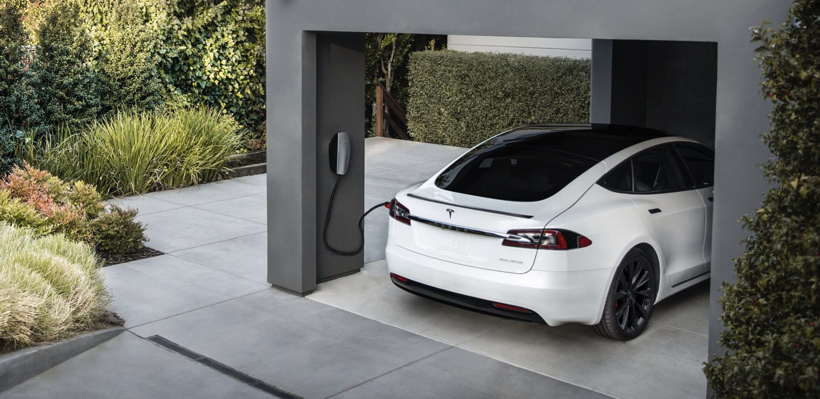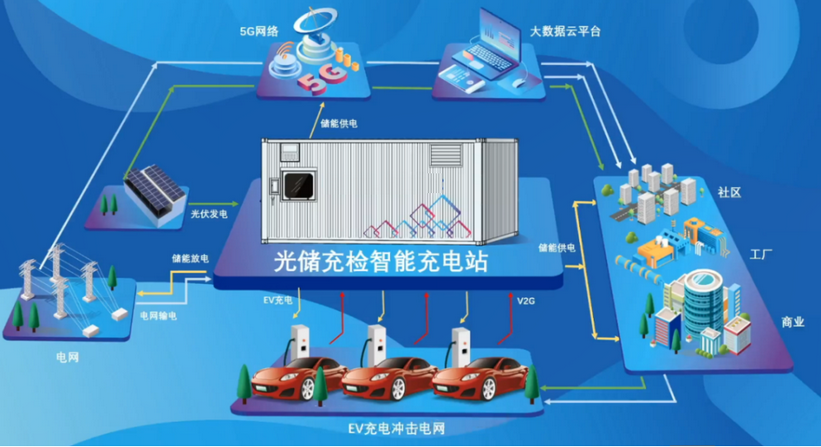| Optical storage, charging and discharging, the next trillion-track of new energy |
| Release time:2023-03-10 09:43:27| Viewed: |
In the future, smart electric vehicles will not only work for humans, but also for the sun.
Last week, Lao Li and his friends planned a documentary about the future of smart electric vehicles. The content is probably: in the future smart city, smart electric vehicles will be the central carrier of vehicle, energy, transportation, communication and environmental change, and will become a more important living tool than smart phones. This sounds very far away, but please believe that within three years, these scenes will appear in family life.
Since this year, many investors have seen that Tesla is currently promoting the cross-border integration of energy, transportation and automobile in Europe and the United States. They want to let Chinese consumers quickly feel that the future of smart electric vehicles is "more than cars", deepen their understanding of secondary markets such as energy and communications, and help the market value of these fields to rise.
Today, around the first topic, "Integration of cars and energy", Lao Li talked with you about how new energy vehicles are integrated with energy through "optical storage and charging"? Why is Tesla the first energy company in the automotive industry? When will the integration of smart electric vehicles and energy be popularized in China?
What is the integration of new energy vehicles and energy?
The direction is correct and the business side can improve. Before talking about this topic, Lao Li selected a paragraph of the "New Energy Vehicle Industry Development Plan (2021-2035)": 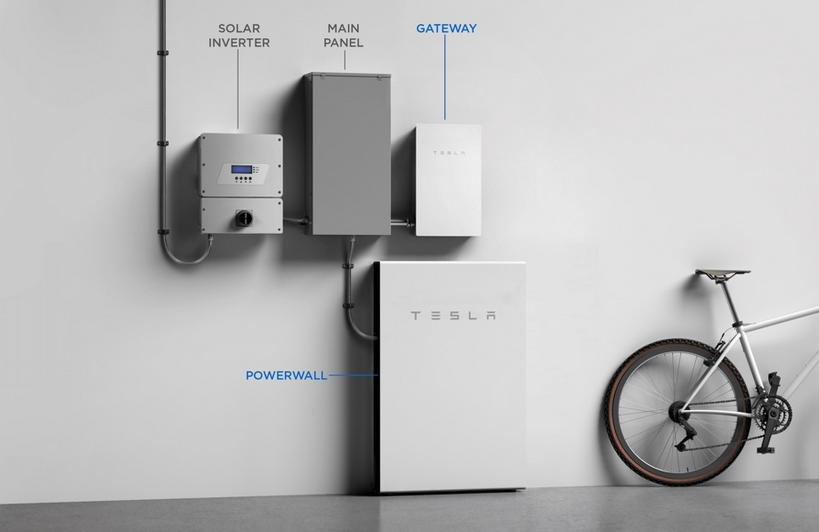
In this sentence, the strategic significance and future scenarios of smart electric vehicles are described very clearly. I want to say that the government's judgment on the industrial planning and future pattern of new energy vehicles is really farsighted.
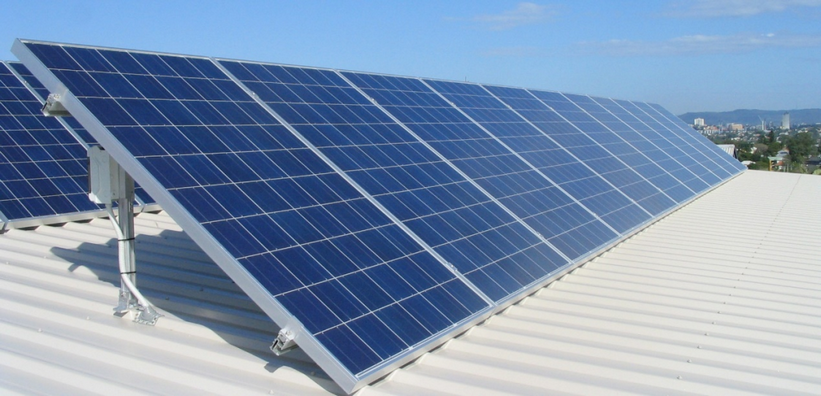
The first type is fixed "optical storage charging and discharging", which is the most common fixed microgrid. It uses photovoltaic power generation to store electricity in the energy storage battery. The energy storage battery supplies electricity to the charging pile. Through the optical storage and charging system, solar energy is transferred to the power battery of the vehicle for driving. The new energy vehicle has become zero emission from energy to vehicle. The second category is mobile micro-network. Zeng Yuqun has always mentioned that the first of the three major development directions of the Ningde era is "mobile energy storage replacement". The new energy vehicle carrying a battery pack of more than 60 degrees is a typical "mobile energy storage" tool under the condition of meeting the discharge function. The so-called integration of automobile and energy includes two concepts: charging and discharging. Clean energy is charged to the vehicle, and the vehicle is discharged as an energy storage tool. The V2G (Vehicle to Grid) we mentioned in our daily life is only one form of discharge.
Many friends will ask if the integration of automobile and energy is very far away? Whether it is industry or capital, everyone's view on "optical storage charging and discharging" is that at present, the development stage of "optical storage charging and discharging" is like the new energy vehicles ten years ago. Considering the speed of industrial integration and the accelerated development of technology and cost, the maturity and popularity of optical storage charging and discharging will far exceed that of new energy vehicles. That is to say, in 3-5 years, optical storage charging and discharging will hopefully get more application and promotion in cities or villages.
Why is Tesla an energy company?
Tesla is one of the best companies in the world in the combination of automobile and energy. There is no one. In essence, Tesla is not only an automobile company, but also an energy company. If Tesla is half a position ahead of other auto companies in the field of automatic driving, Tesla is one position ahead of other companies in the field of energy.
Tesla's "optical storage, charging and discharging" system includes three products in total. The first "optical" product is Tesla's Solar Panels. In this concept of "big solar energy", you can feel the unlimited space of the market only by looking at the market value of Longji shares; The second is the "storage" product, that is, the Powerwall household battery pack - a fixed household "charging bank", which is not high in capacity, but enough to meet the needs of household use. In the past, Tesla has no battery production capacity. The Powerwall household battery pack has always been used by Panasonic, and now Tesla also has the capacity to manufacture battery cells. In a broader sense, Tesla's car power battery can be seen as another product in the "storage" link. The car power battery plays a mobile household "charging treasure"; The third is the Supercharger (super charging pile) in the "charging" process. This product is very familiar to everyone. Lao Li doesn't explain it too much.
In June this year, the first Tesla integrated optical storage and charging super charging station in China was completed in Lhasa. The application of Lhasa is more of publicity significance. In July, Tesla launched the first integrated optical storage and charging station in the eastern region in Baoshan, Shanghai. If the promotion is successful in Shanghai, it will be rapidly popularized throughout the country.
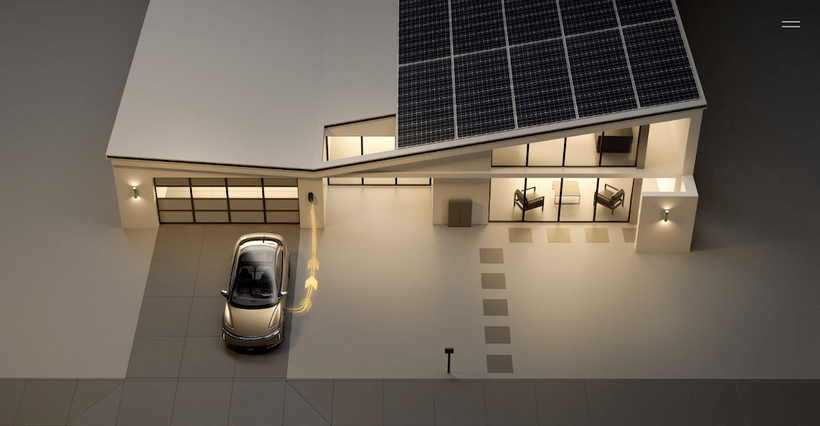
From the perspective of the capital market, Tesla is unlikely to reach a market value of 1 trillion by relying on new energy vehicles alone. Tesla's market value includes automobiles, energy, automatic driving and big data. With the mass production of Tesla 4680 batteries, Tesla Energy will be no less important and influential than Tesla Motors.
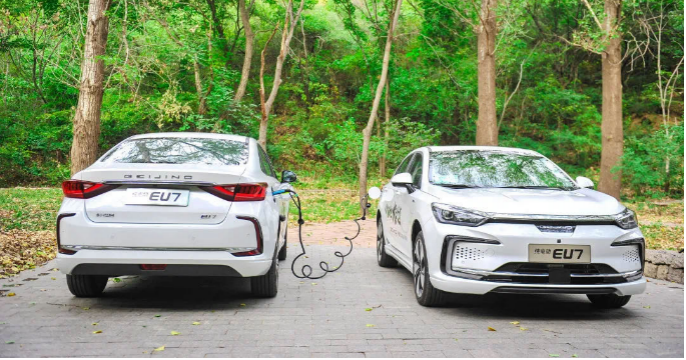
The capital market has keenly caught the development trend of the industry, but the domestic automobile enterprises have not yet laid out the field. At present, the domestic enterprises that lay out "optical storage and charging" are mainly Ningde Times and Huawei. It is not easy for Tesla to promote in China in the short term, but its competitiveness is very obvious from the perspective of five years.
How far is China's "optical storage and charging"?
In the past, the development of "optical storage and charging" in China was very slow, mainly because of the lack of a good external environment. First, China is mainly based on thermal power, and the electricity price is very cheap. Second, China's urban households have no conditions to install "optical storage and charging" infrastructure.
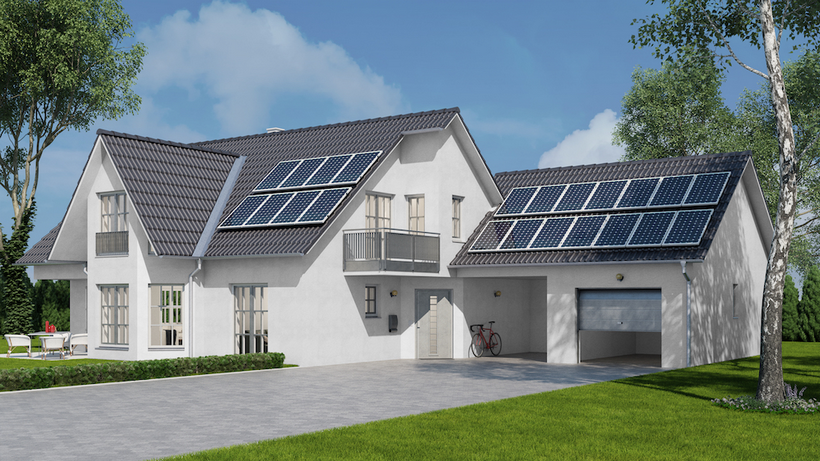
When you see this, remember the new energy vehicles ten years ago. Ten years ago, new energy vehicles were developed in the form of "ten cities and thousands of vehicles" demonstration. In the market view, new energy vehicles are expensive, inconvenient, and of average technical level, which makes it difficult to meet the conditions for large-scale promotion. However, the state's huge subsidies and the inflow of social capital have accelerated the technological maturity and cost reduction of new energy vehicles, which has led to the current development pattern.
The same is true of today's "optical storage and charging". The current problems of high cost and low safety are very similar to those of new energy vehicles in the past.
If we take "optical storage and charging" apart, China is ahead of the world in the field of photovoltaic and charging. However, the development speed of the energy storage field is not enough. In the first half of this year, the fire of the largest optical storage and charging demonstration project in Beijing triggered the attention of all sectors of society to the safety of energy storage. How to ensure the safety of the battery is the key issue of the optical storage and charging project. Ningde Shidai released the sodium ion battery this year, and its core application scenario is energy storage, The stability of sodium ion battery can solve the safety problem to a certain extent.
Many friends also mentioned the cost problem and the problem of access to the Internet. Comparing the current construction cost of optical storage and charging with the domestic low electricity price is obviously an impossible account, but the cost of optical storage and charging construction will continue to decrease. Under the dual-carbon goal, the utilization rate of clean energy will be higher and higher, and parity is only a matter of time.
The problem of access to the Internet may be more difficult to solve than the problem of cost. In fact, whether it is mobile energy storage or fixed energy storage, it is not important whether V2G can be achieved. We only need to use electricity reasonably in the "microgrid". In fact, the energy innovation project of the integration of optical storage and charging is essentially the users of the smart energy ecosystem that everyone shares, from the traditional "consumer" to the "consumer", and each user can use electricity and generate electricity.
Industrial transformation has provided capital practitioners with a new track of investment, and also increased the difficulty of research. In the first half of this year, no one could expect the explosive growth of penetration of new energy vehicles. The same is true of the current "optical storage and charging". Standing in the tide of change, we can neither predict the outbreak node nor deny the feasibility. "Not letting go of every opportunity" may be the best attitude.
Disclaimer: If the videos, pictures and text used in this article involve copyright issues, please inform us at the first time, and we will immediately delete them without any commercial use! |



